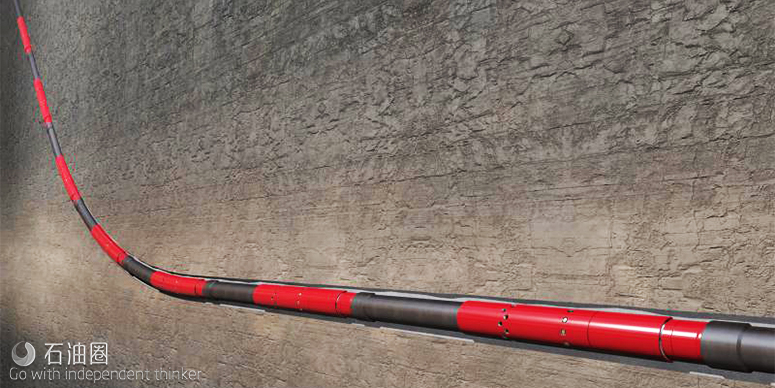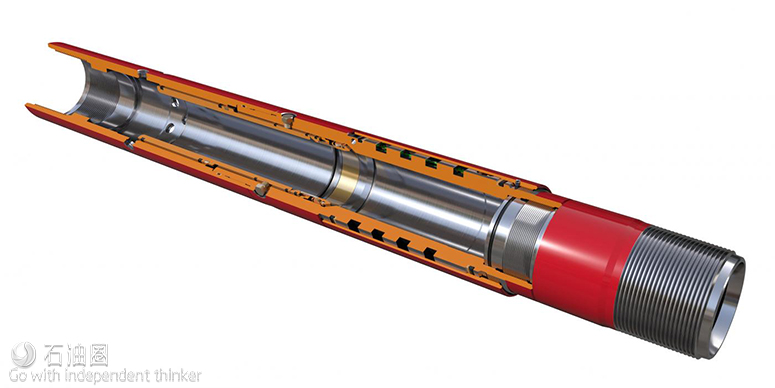Reinventing The Sliding Sleeve
Historically, fracturing was characterized by the method of isolating the stages that had been previously fractured. The most successful methods for isolating fracturing stages have been plug and perf (PNP) and sliding sleeves. Hydraulic fracturing with a PNP system is much more common than fracturing with sliding sleeves due to the perceived importance of having a large number of individually fractured stages in the wellbore. With PNP, multiple perforation clusters are placed in a single stage. Studies into the effectiveness of this method have concluded that many clusters are actually not taking fluid and are not contributing to production. This realization has steered industry efforts toward optimizing cluster efficiency, making pinpoint stimulation with fracturing sleeves a viable option.
Challenges
Traditional multistage fracturing sleeve offerings take the form of two designs: ball drop-actuated sleeves and coiled tubing (CT)-actuated sleeves. Ball drop-actuated sleeves use progressively sized balls to land on progressively sized baffle seats. This progressive sizing means that larger balls are used for each subsequent fracturing stage, and the baffles are progressively smaller toward the toe of the well. Hydraulic fracturing with ball drop-actuated sliding sleeves is fast and water-efficient, but the number of stages is limited by the system design and capabilities. Only a finite number of incremental baffle sizes can fit within the casing. Additionally, the smaller baffle diameters can limit fracturing pump rates, production rates and the passage of cement wiper darts.
CT-actuated sleeves are used in a similar fashion as the ball drop fracturing sleeves; however, a CT-deployed bottomhole assembly is used to open the sleeves and provide zonal isolation. Although this overcomes the challenges associated with incremental seats, it does add the risk of CT in the wellbore when performing highintensity high-volume stimulations and can result in erosional/ sleeve integrity issues in the heel of the well.
Pump rates also are restricted to limit the impact of erosion and friction when pumping down the annulus of the CT. These reduced rates can minimize the ability to effectively achieve desired fracture extension and optimize stimulated reservoir volume. Both the traditional ball-drop and CT fracturing sleeve systems have challenges that limit the ability to provide an unlimited number of stages and allow operators to optimize their stimulation programs to more effectively contact the reservoir. Hydraulic fracturing with the PNP method allows an unlimited number of stages but at the expense of some of the operational efficiency.
Electronic completion
The new Elect monobore sliding sleeve system from Halliburton combines the operational efficiency of sliding sleeves with the same potential to hydraulically fracture an unlimited number of zones as is inherent to PNP operations. The result is a monobore sliding sleeve system in which a same-sized ball is used to activate and provide zonal isolation for each sliding sleeve. The system enables an unlimited number of treatable zones, accesses a larger amount of the reservoir and delivers an increase in the efficiency of hydraulic fracturing operations. This new sliding sleeve system uses electronics to determine when the sleeve needs to open. The electronics count the number of fracture balls that have been pumped through the tool.
An electro-hydraulic lock activates when the targeted number of balls pass and shifts the sleeve. The shifting can enable single-entry, multi-entry or toe-sleeve type operations. The Elect single-entry fracturing sleeve system uses fracture balls that have embedded magnets. The magnet-embedded fracture balls are pumped into the wellbore like any other traditional fracture ball. The magnetic field is easily detected by the electronics; thus, the sliding sleeve can calculate the number of fracture balls by counting the passing magnetic pulses.
The magneto-electronic signaling of the monobore sliding sleeve is well-suited to hydraulic fracturing operations because all of the counting mechanisms are removed from the inner diameter (ID) of the tool. The critical components of the sleeve are housed out of the flow path of the fracturing fluid.
“We initially looked at mechanical methods for counting balls,” said Zachary Walton, principal R&D engineer in charge of the development of the Elect sleeve systems. “We were concerned about the reliability of a mechanical counter when exposed to high-rate fracturing as well as to cementing. Proppant can really lock up a mechanical system. Mechanical counting also is limited by the number of clicks built into the tool.”
The electronics installed in the monobore sleeves allow additional logic to be incorporated into the counting steps. Combinations of magnetic signatures are used to create additional commands, such as a command to send the tools to sleep. This helps ensure the ball counting will not be confused by the passage of other downhole intervention tools that might be used during an inadvertent screenout. The electronic counting methodology also allows an adaptive threshold to help ensure the signal from the magnetic fracture balls is always stronger than any ambient magnetic field or noise inherent in a wellbore.
Batteries power the electronics in the sliding sleeve, but these are not typical batteries. Lithium batteries are routinely used downhole, but these electronics required a new variation on the lithium chemistry to provide power for extended time at downhole temperatures. Multiple electronic assemblies were tested for an extended duration at representative downhole temperatures. The battery voltage was monitored and recorded during the testing. By using a combination of sleep mode and efficient electronics design, the electrical system operated for at least 90 days, and the sliding sleeve opened when the magnetic fracture ball was passed. Additional batteries and lower operating temperatures allow a longer time between installing the completion and fracturing the wellbore.
“The Elect sleeve represents collaboration between multiple Halliburton product lines. Research on battery technology and electro-hydraulic locks has been leveraged into many of our products,” said Dr. Michael Fripp, chief scientist for completions research at Halliburton.
Future of completions
The Elect monobore sliding sleeve system is designed to be used with dissolvable fracture balls. The fracture balls are constructed from a high-strength dissolving metal and are embedded with dissolving magnets. Both the metal and the magnets will dissolve into micron-scale dust with exposure to wellbore fluid. Neither fluid substitutions nor added enzymes are needed to induce dissolution. Using the dissolving metal and magnet fracture ball along with the electronic sliding sleeves enables a full-wellbore ID once the hydraulic fracturing operations are complete.
This type of technology lays the foundation for future innovations in hydraulic fracturing and provides a modular design that can be used for multi-entry and toesleeve designs. Once these types of technologies are proven in a downhole environment, additional capabilities will be enabled through hardware and software improvements. These enhancements will advance the future of unconventional completions to include wellbore diagnostics, wellbore monitoring and real-time data acquisition.

 石油圈
石油圈

